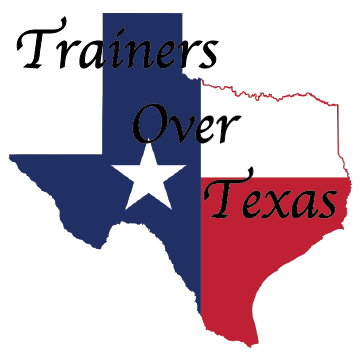Emergency Preparedness
American Heart Association statistics reveal that we lose over 325,000 victims per year.
Only 1 out of 3 people receive CPR and once a person collapses, brain damage starts in 4 to 6 minutes. The brain becomes dead after 10 minutes due to a lack of oxygenated blood.
The average EMS (911) response time is 6 to 10 minutes, which is far too long without oxygenated blood to the brain.
When a life threatening emergency exists or is imminent, it’s not enough to have a CPR / AED certified staff! Your staff needs an Emergency Plan!
Trainers Over Texas is committed to addressing this issue by providing professional emergency planning, education and support.
Having the right People in place (First Responders) and the best Products (Defibrillators) isn’t complete without an effective Emergency Action Plan (EAP).
In a typical workplace, the EAP should contain specific procedures on the following:
How designated first aid workplace providers are notified to respond?
There are 3 ways: word of mouth, intercom system or electronically (radio, phone, or email).
What is expected of workplace providers when they respond?
Have the knowledge and confidence knowing the protocol.
How to activate EMS from the workplace?
Dial (911) direct, dial the receptionist or security (always site specific)
How to efficiently help EMS (Emergency Medical Services) get to an ill or injured person?
Having a plan for someone to wait out front to lead EMS to the victim
Our goal is to ensure that each student has the knowledge they need to safely recognize an emergency.
CPR
Cardio Pulmonary Resuscitation
CPR is an emergency procedure performed in an effort to manually preserve intact brain function until further steps are taken to restore blood circulation and breathing for a person in cardiac arrest.
CPR alone is unlikely to restart the heart, its main purpose is to restore partial flow of oxygenated blood to the brain and heart. The objective is to delay tissue death and allow successful resuscitation without permanent brain damage.
This course outlines the ability to recognize the steps to take during a collapsed emergency such as:
Scene safety
Assessing victim responsiveness
Activating EMS (911)
Assessing victim breathing
Start Compressions
Establishing an open airway
Start Rescue Breaths
Continue CPR until victim show signs of life or the AED or EMS (911) arrive
First Aid Care
The office can seem like a safe place to work, but, there are risks you wouldn’t think of until they happen. An accident can occur at any time and if it did, who in the workplace is trained to help? It is a legal requirement as a company to ensure your employees receive immediate attention. Here are 10 reasons why you should consider First Aid Training for employees.
10 Benefits of First Aid Training in the Workplace
1. It can save lives
2. Reduce the number of workplace accidents
3. Positive work environment
4. Your company will be safer place to work
5. First aid kits are used properly
6. It can reduce recovery time
7. It can keep employees safe outside of the workplace
8. It’s a great team-building exercise
9. It gives your employees confidence and clarity during an emergency
10. The cost of a First Aid at Work Training course is nothing compared to that of potentially saving a life.
This course outlines:
Primary & secondary assessment: skin temp, skin tissue color, mental awareness questions
Control Bleeding: applying pressure, tourniquets/ hemostatic dressings & controlling Shock
Internal Bleeding: signs of shock
Head, neck & back injuries: stabilizing skills
Burns: recognizing the type, & what to apply
Sudden Illness: Altered Mental Status, Fainting, stroke, seizure, heart attack, ect…
Poisoning: Ingested, inhaled
Environmental Emergencies: Heat exhaustion, heat stroke, Frostbite, hypothermia
AED
Automatic External Defibrillators
Defibrillation is a common treatment for life threatening cardiac arrest victims.
This course consists of learning how to deliver a therapeutic dose of electrical energy to the affected heart. Students will practice essential skills in small group practices and will be evaluated through Instructor observation.
Students will have the ability to:
Recognize sudden cardiac arrest
Use an AED, bare, prepare, pad placement
Learn AED troubleshooting messages
Learn other AED operations

